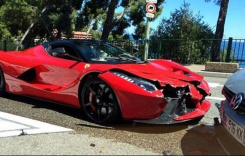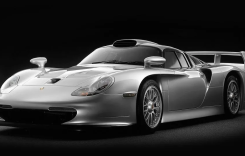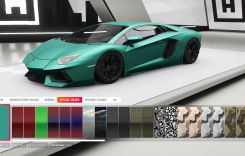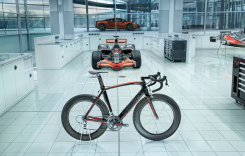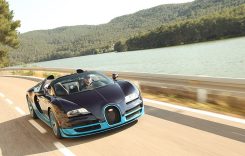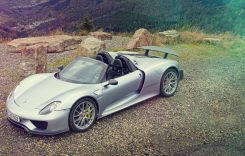That was with six weeks’ notice, and I immediately started packing. But I also had six weeks to worry. The last ZX-10R I rode was a 2005, and though fun, it was sort of a beast. Even though 12 years have passed since the ZX-10R first appeared, that original bike’s 433-pound measured wet weight and 160-ish rear-wheel horsepower are good enough to compete in 2016. That little green monster was entertaining, to say the least, but not known for being civil, gentlemanly or comfortable. The interim years have been a process of refinement, and if it’s been a long journey, it wasn’t fruitless – the 2016 ZX-10R is refined, easy to ride, comfortable… and still fast enough to scare you.

Six weeks and 8000 miles later, I found myself in a nicely appointed pitlane garage at the Sepang International Circuit, sweating through jetlag and an hour-long tech briefing in a 95-degree tropical soup.
The new motor parts won’t yield too much extra power – maybe 5% or so – but that’s not the whole story. The changes help make it quieter (which allows potential for more mid-range power from the aftermarket) and amenable to tuning; for instance, the titanium-alloy headers are so light and similar to race-only headers that Two Brothers racing couldn’t make more power with their own header design, according to Kawasaki’s Media Relations Supervisor Brad Puetz. Other racer-friendly features include a cassette-style gearbox (allowing transmission changes and servicing without splitting the crankcase) and a back-torque limiting clutch.
The frame looks a lot like the old frame, but it’s totally different.

Apparently you really can go too low with your center of gravity, so Kawasaki raised the engine and moved it forward in the frame to improve weight distribution and quicken steering while improving stability. The swingarm is all new, stretching the wheelbase to 56.7 inches as well as changing the mount position, and if the swingarm position and steering angle aren’t just to your liking, you can adjust them with Kawasaki race kit parts. The downside is the new frame and other modifications have added about 17 pounds to the claimed wet weight.
Kawasaki calls the 43mm Showa Balance Free Fork “WSBK influenced,” and it looks the part, with external compression chambers that separate compression and rebound functions. The rear shock is more conventional looking, but also claims a “balance free” design, with an external damping force chamber and independent compression and rebound damping. Showa suspension engineer Tomoyuki Minoura told me the new fork is serviceable by independent suspension-tuning shops, meaning spring, oil and seal changes are relatively simple, but it may be difficult for independent suspension shops to tune the damping by altering the shim stacks.

Showa is searching for shops to work with, and is also working to develop a remote preload adjuster for the rear shock. Minoura-san didn’t understand the phrase “remote preload adjuster,” so I mimed scraping the skin off my knuckles adjusting the rear shock and he instantly got it. That’s the international language of suspension adjustment. Brakes are special bits also, Brembo M50 cast monobloc calipers that tasted like money when I touched my tongue to one. The stainless brake lines don’t just look good – they are top-spec items, and the entire system is the same as the $50,000 H2R‘s.
The Bosch IMU – the traction control’s sensors, located in a small black box screwed to the airbox – looks just like what other manufacturers use, but Kawasaki’s “secret sauce” is what it calls the “Sixth Freedom” (which I thought was an Ayn Rand novel) but which is actually the yaw rate – angular velocity, such as when the rear tire is stepping out in a power slide. The engine management unit (EMU) measures yaw as well as receiving data on the other dynamics – acceleration, pitch rate, roll rate and cornering force. Kawi claims its system is better because it is “predictive,” using all the variables the ECU can measure to control power to the back wheel and boost rider confidence. It also works with the available Kawasaki Intelligent Braking System (KIBS) ABS to adjust braking force based on lean and acceleration, similar to the systems on the Yamaha R1 and BMW S1000RR.

There’s new bodywork for better wind management and aerodynamics, and the rear turn signals and tail lamp make it more racer/trackday friendly, but what Kawasaki emphasized at the technical briefing was the electronics package.
So here are some numbers, the ones I always skip to when I’m reading a new-model review. The 2016 ZX-10R’s claimed wet weight is 454.2 pounds (about 20 pounds more than that 2004 model), makes a claimed 200 horsepower (expect about 165-170 at the wheel), and pricing starts at $14,999. But how well does it work? Kawasaki had very generously rented Sepang (a guy I met on the train from the airport told me how to say it: “seh-PONG!”) for the week. It’s a 15-turn, 3.4-mile GP track with two long straights and a mix of high-speed and low-speed twists. Pavement, as you’d expect, is smooth and almost seamless. We’d get one session with ABS and street tires, and the rest of the day we’d be on slicks. Oh, how I suffer for my work.
You know you’re on a Kawasaki when you hear the ZX-10R’s motor start.
It sounds deep and authoritative cranking over, then it catches and settles into a smooth, throaty idle. Clutch and gearbox action are effortless and light, and I liked the easy low-speed maneuverability and low reach to the ground (my inseam is 30 inches). This isn’t a street test, but I’m thinking the ZX-10R should be comfortable and easy to handle.
Acceleration, as you may expect, is volcanic. Come off the corner and get on the gas as early as you like, and be prepared for WSBK speeds as you approach the next corner. That early throttle, fast-revving engine, buttery transmission and fast-acting quickshifter bring the brake markers faster than you thought possible, but it’s a surprisingly undramatic experience thanks to the traction control, launch control (which makes it tough to get the front wheel up), and reactive Öhlins steering damper that telegraphs its input to the rider.
The brakes and suspension are remarkable.
I don’t know if it’s the radial-pump master, the high-spec brake lines or those delicious calipers, but no matter how I used those front binders – hard, light, trailing, or oh-shit-is-that-the-corner-already – they responded with firm, steady and measured pressure, never grabby or fading. In ABS mode, hard braking failed to produce any judder or other evidence the electronics were cycling and interrupting braking pressure. That exotic-looking front suspension provided good feedback, bump absorption and control, though honestly everything feels good at a track like Sepang.
The slipper clutch gives you noticeable feedback, but there’s no tire chirping or other drama, even dropping into first gear, which I normally never do on a racetrack. But why not? The bike’s probably geared to go-to-jail speeds in first gear, and the fueling, traction control and drivetrain lash is such that you can roll on gas in first with surprising smoothness and confidence – no fear of briefly watching the bleachers from 12 feet in the air. In fact, there were no crashes after five waves of journalists from Monday to Friday. That’s including French and Englishmen, which must be a first in human history.
Steering wasn’t as light as I expected – you won’t forget you’re on an open-classer – but it’s not heavy, either. It’s stable, predictable and lets you focus on your cornering line. It did feel long, which is great for mid-corner stability, but it didn’t have that Dinklage-esque teeny-ness I noted in the 2004 model. That gives you confidence to rail through sets of connected high-speed turns, which is probably the most fun you can have on a literbike. Being jetlagged in 95-degree heat with high humidity isn’t the ideal state to learn a new track on a 200-horsepower race machine, but it was still a relaxed and comfortable morning… and then it started raining, ending my dream day.
I know my laptimes would have improved.
I know I may have started lofting my front wheel, in MotoUSA Road Test Editor Adam Waheed-style, maybe even feeling comfortable enough to test the electronics’ capabilities in different modes. Alas, we’ll have to wait for the full test.
Even without a full day, I’m impressed by the ZX-10R. It’s wild and hairy enough to be called a Ninja, but it’s still civilized, comfortable and easy to ride, with a smooth engine, good ergonomics and excellent wind protection (until you sit up for braking at 150 mph). It would make a good street bike, but because of the outstanding (and expensive) braking and suspension components, it’s also a good starting point for racers and the kind of trackday junkies that feel the need to be the hero of the A Group. Kawasaki is sweetening that deal by offering millions in racer incentives, including a $2000 rebate to licensed racers, and an array of race-kit parts will also be available at your local dealer – the race ECU should uncork 20 or more horses, and you’ll be able to defeat the ABS in just the front wheel as well as tune engine braking separately in each gear and more.
Has the gas-powered superbike hit a performance ceiling? After all, the ZX-10R, which won the 2015 WSBK title, is pretty much the same weight and makes roughly the same power it did when the guys racing it today were still in grammar school. But those numbers are no longer the story. What’s important is how much of that power you can use, and the ZX-10R lets you use plenty – and safely. It’s a blend of performance, comfort and value that will be tough to beat.
2016 Kawasaki Ninja ZX-10R Specifications:

Engine: Liquid-cooled Inline Four, DOHC 16 valves
Displacement: 998cc
Bore x Stroke: 76 x 55mm
Compression Ratio: 13:1
Fuel System: DFI with four 47mm Keihin throttle bodies, two injectors per cylinder
Ignition: TCBI with digital advance and Sport-Kawasaki Traction Control (S-KTRC)
Transmission: 6-speed
Final Drive: Chain
Front Suspension: 43mm inverted Showa Balance Free Fork, adjustable stepless rebound and compression damping, spring preload adjustability with 4.7 inches travel
Rear Suspension: Balance Free Rear Cushion shock, stepless, dual-range (low/high-speed) compression damping, stepless rebound damping, fully adjustable spring preload with 4.5 inches of travel
Front & Rear Tire: 120/70 ZR17; 190/55 ZR17
Front Brakes: Dual semi-floating 330mm discs with dual 4-piston radial-mounted Brembo M50 monobloc calipers
Rear Brakes: Single 220mm disc with aluminum single-piston Nissin caliper
Frame: Aluminum perimeter
Rake & Trail: 25°/4.2 inch
Seat Height 32.9 inch
Curb Weight* 449.8 pounds (454.2 pounds ABS model)
Fuel Capacity 4.5 gallons
Wheelbase 56.7 inch
Color Choices Metallic Matte Carbon Gray, Lime Green / Ebony (KRT Edition)
MSRP: $14,999 (non-ABS), $15,999 (ABS), $16,299 (KRT Edition ABS)

